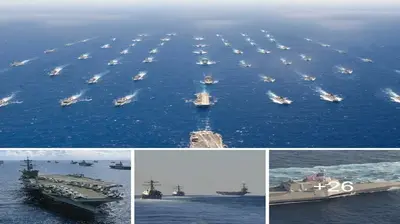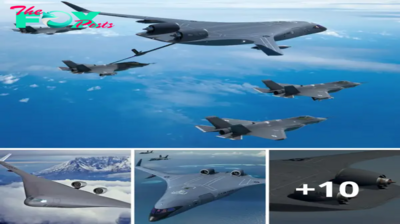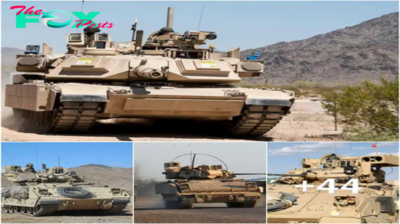The flagship Admiral Kuznetsov
Russia currently owns only one warship that can carry and deploy combat aircraft – the heavy cruiser Admiral Kuznetsov, the current flagship of the Russian Navy, launched in 1985, put into operation in 1995, 305m long, with a displacement of about 65,000 tons.

When designing the Admiral Kuznetsov, the Soviet Union intended to have two of these. The other ship, named Varyag, was incomplete when the Soviet Union broke up in 1991 and was divided among Ukraine. Kiev then sold the ship to China, which Beijing improved and named the Liaoning aircraft carrier.
Despite being able to carry 40 fighter jets, Admiral Kuznetsov used a diesel engine, making it easy to recognize by the black smoke when moving.
Unlike the US aircraft carrier fleet, Admiral Kuznetsov has the ability to operate independently thanks to a multi-layered defense system, including 24 3K95 short-range air defense missile launchers, 8 artillery / / CIWS Kashtan missiles and 6 AK-630 30mm anti-aircraft artillery systems.

In terms of attack capacity, the ship is equipped with 12 P-700 Granite supersonic anti-ship missiles located just below the deck. Granite missiles can carry nuclear or conventional warheads; with two RBU-12000 anti-submarine rocket complexes, 12 km range.
Despite his power, Kuznetsov had little chance to participate in actual combat. In January 2009, while off the coast of Turkey, the ship caught fire, killing one person. A month later, it crashed again off the coast of Ireland, leaking an estimated 300 tons of oil into the sea.
Admiral Kuznetsov underwent lengthy repairs at the port several times. Incidents and accidents were so frequent that the ship had to be accompanied by a logistics vessel for repairs.

The Kuznetsov’s first combat engagement was at the end of 2016, when it joined a group of ships to attack Islamic State (IS) terrorist targets on Syrian territory.
However, the breakdown of the brake cable on the ship caused the Russian naval aviation to lose a Su-33 heavy fighter and a MiG-29K multirole fighter. Admiral Kuznetsov had to return home and was put on a floating dock shortly after for repairs.
“Dark luck” continued to surround the ship when the only floating dock capable of carrying the ship was PD-50, which sank due to a power failure in October 2018. When the floating dock PD-50 sank, it also caused a crane to collapse on the deck of the aircraft carrier Admiral Kuznetsov, damaging part of the deck.
After several years of struggling, the Admiral Kuznetsov has not been able to return to combat. Sources from the Russian Navy later told the media that Russia may kill the Kuznetsov and start building a new ship with more suitable combat capabilities.
Peter the Great – the most powerful attack ship in the world
As an operational-strategic unit of the Russian Navy, the Northern Fleet is young, but possesses the most powerful and largest warships of the Russian Navy.
Among them, the ship Peter the Great (Pyotr Velykyi) – the flagship of the fleet, is the ship with the strongest attack power. The ship is also a rare generation of surface warships equipped with nuclear engines, allowing it to operate continuously at sea and only have to dock when food or ammunition runs out.

Peter the Great is one of four ships of Project 1144 Orlan (also known as Kirov) designed by the Soviet Union in the 1970s. These are surface warships with the second largest size and displacement in the world, with a length of 252m and a displacement of 28,000 tons.
The Soviet Union referred to the Kirov class as a nuclear-powered heavy missile cruiser (TARK). Western Military experts call them “battlecruiser” because their shape is quite similar to battleships.
Kirov-class ships are designed with the ability to operate independently or in a mixed fleet of aircraft carriers, cruisers and destroyers.

Born for the purpose of destroying an entire enemy aircraft carrier fleet, the ship possesses a lot of offensive weapons, notably 20 P-700 Granite anti-ship cruise missile launchers, range of 625 km, carrying a 750 kg high explosive warhead or a thermonuclear warhead equivalent to 25 atomic bombs dropped on Nagasaki.
In addition to the anti-submarine ammunition systems, the ship is equipped with the S-300 Fort air defense complex dedicated to the Navy with 96 rounds of 48N6E; with 3K95 medium-range air defense missile complex carrying more than 100 rounds.











































